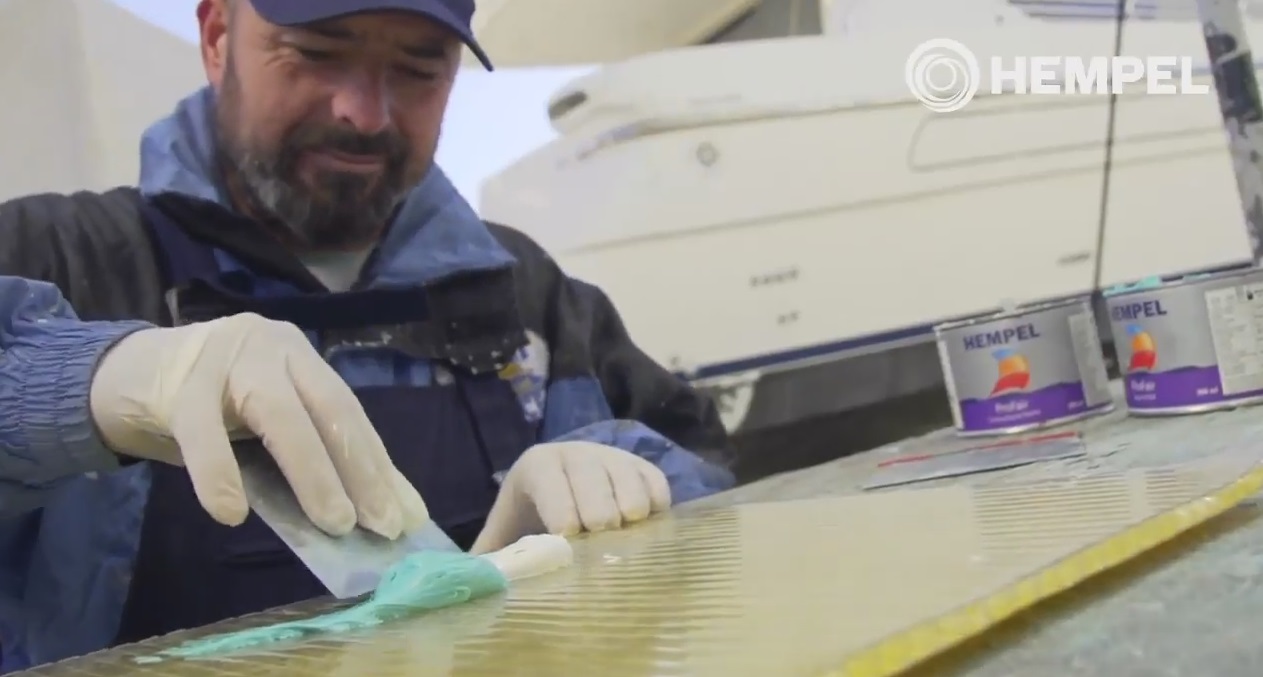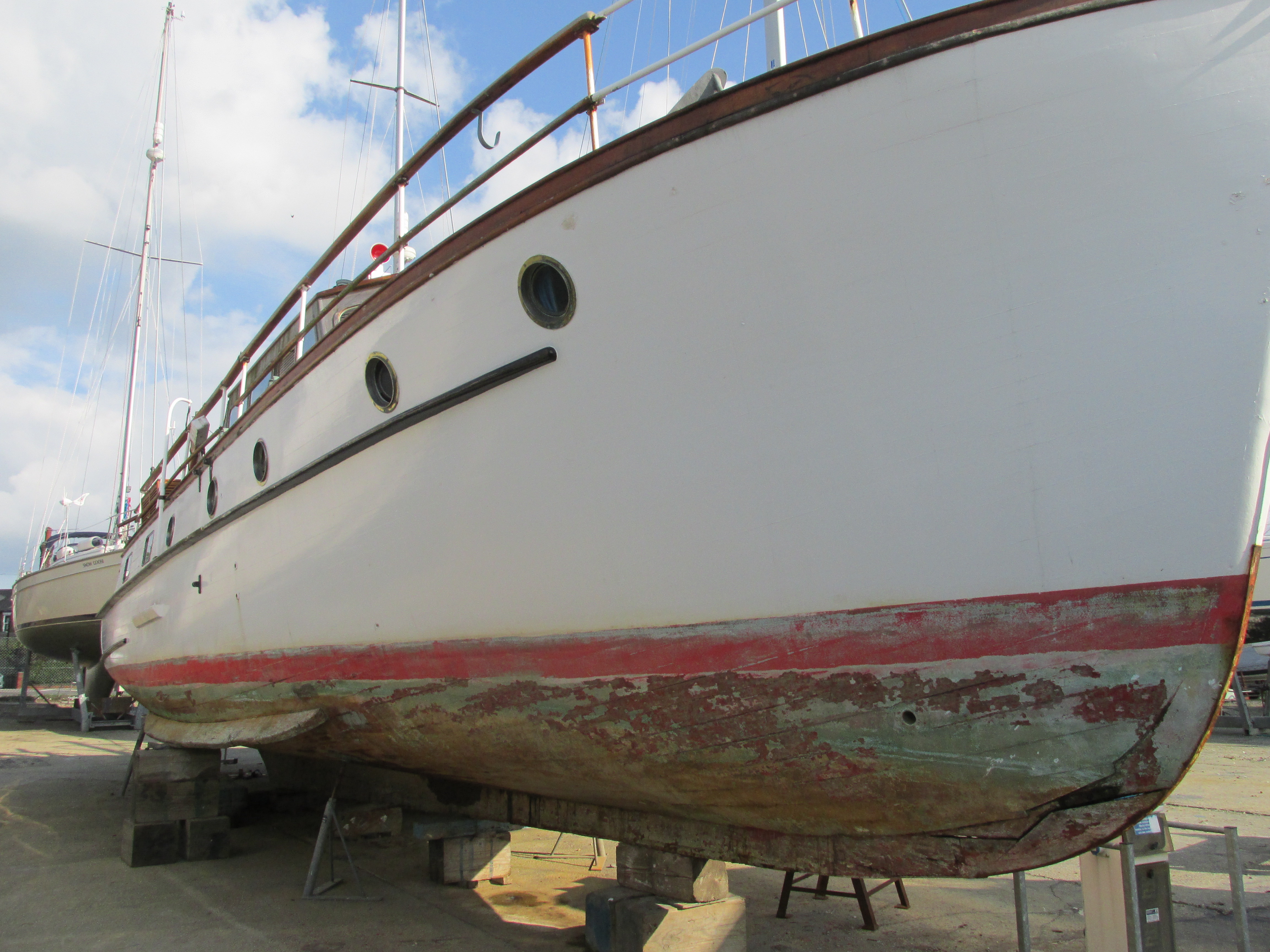Why do boat owners need to antifoul their boats? This is an essential part of seasonal boat maintenance that can help prolong the life of your boat. Antifouling paint is applied to the hull of a boat or ship to prevent or slow the growth of organisms that attach themselves to the bottom of the vessel. These organisms, if allowed to grow naturally, will often have a negative effect on the performance of your boat.
•Polish and protect the gelcoat
Antifouling coatings are also useful for a number of other reasons. For example, antifouling paint can act as a barrier against corrosion on boats with metal hulls, and it can also improve the flow of water past the hull of a fast moving fishing vessel or high-performance racing yacht. Because the antifouling paint is so important, it's vital that you apply the substance in the best possible conditions.
These new videos from Hempel, the boat protection specialists, will give you first-hand knowledge of the process of boat antifouling.
How to fill the surface
How to apply Hempel's Underwater Primer
How to apply Hempel's Antifouling
How to polish and protect the gelcoat
- For more information from Hempel visit: http://www.hempelyacht.com/en-GB/how-to
- For a wide range of antifouling products visit our chandlery Mailspeed Marine
BoatsandOutboard advice on how to antifoul your boat

Preparing your boat for antifouling
The first stage of antifouling is to prepare the vessel for the application of the paint. As soon as you get your boat back on shore, you should get to work on the preparation.
Firstly, you'll need to pressure wash the bottom of your boat in order to remove any organisms that are lodged to your vessel. If you don’t do this straight away, and let the boat dry out, then it becomes extremely difficult and time consuming to remove this fouling.
If there are any small areas of antifoul that are loose or flaking then you can remove this with a paint scraper. If, however, there are a number of layers of antifoul paint from years gone by, then you'll want to strip the hull back to a nice and sound surface before applying more.
You must remember that antifouling dust can be extremely hazardous, which means that the only safe options are wet sanding or using a chemical stripper that is designed to be used on fibreglass. However, even if you're using the appropriate method for removing this dust, you should also ensure that you're wearing all of the correct protective clothing. This includes goggles and an effective face mask. It's important that you remember that a cheap decorator’s mask won't do the job and won’t protect your lungs against the dust. If you don’t feel comfortable removing this dust yourself then you could always approach a professional to carry out the job for you.
Once the old antifouling has been removed, you can sometimes still work out the waterline, however, it is always a good idea to measure the distance of the waterline, below the gunwale all the way across the boat. Then, when it comes to adding the new antifouling paint, you are able to accurately ensure that you cover all of the boat that sits beneath the waterline.

The final stages of preparation
Once you've cleaned and scraped the hull of your boat, and removed all of the old antifouling, you'll want to carry out a few more stages of preparation before you apply the new paint. If your boat is intended for travelling fast, then you'll want to ensure that it’s hull is as smooth as possible.
You'll also need to consider antifouling primer. All bare fibreglass should be primed before you add the antifouling to the bottom of the boat. It's important that the primer you use is appropriate to the type of antifoul paint that you're planning on applying to your boat.
If the hull of your boat has been stripped right back to the gelcoat, then you may consider using an epoxy coating to defend against osmosis. If this is an option that you're seriously considering, you'll want to get a surveyor in first, to test the moisture levels of the hull. If you don’t do this properly then you can end up sealing excess water in with epoxy, which is not a good move.
Current day antifoulings are now often able to be applied over the top of existing coatings, however, if you're unsure as to whether or not its a good idea, it's worth applying primer before you add on the new coat.
You may need to also prepare your keel for antifouling. If you have an iron keel, you should always remove any rust with an angle grinder, before adding your antifouling. You should ensure that the metal on the keel is nice and bright and then you are able to prime it and add the antifouling paint.
If your boat has an unpainted lead keel that has a tarnished oxide layer, then you should remove this by rubbing it down with emery paper or a wire brush in a power drill. The grease and any other contamination should then be removed by washing the keel with a suitable cleaner. Again, once all of this has been carried out, you will be able to prime the keel and apply the antifouling agent.

Applying the antifouling paint
Expect to apply two coats of antifouling paint. The only times one coat will suffice is if the boat is only set to be kept in the water for a few weeks, or, if the local fouling conditions are very weak.
It can be tempting to stretch the paint out over a large area, however, it is important that you don’t do this if you want it to be effective. Another thing that you must always take into account, is the minimum overcoating and immersion times. If you ignore these times then you can end up causing the paint to flake and fall off, meaning it won’t be as effective.
Top tip: When applying the paint, you should always make sure that you give the tin a good stir before you begin. This allows you to mix in all of the solid parts that will have sunk to the bottom of the tin.

We would also advise that when applying the paint you simply grab a medium sized roller with an extended handle. The medium roller is better than a larger version as they absorb and waste less paint. The extended handle is a good idea as it saves you having to stretch and bend all the time, potentially straining your back.
When you are painting the waterline, it is important that you don’t paint any zinc sacrificial hull or shaft anodes, as doing so will hamper their performance.
And, finally, when you are applying antifouling paint, it is vital that you wear a face mask, overalls, gloves and goggles to protect you against the paint. A hat or hooded overall is useful as you do often end up rubbing your head against the boat, which can be painful as antifouling paint is toxic.
Good luck getting this tough job but essential done boat owners!
Article: Alison Clements
Videos: Hempel
Keep up to date with BoatsandOutboards news and advice on Facebook or Twitter


